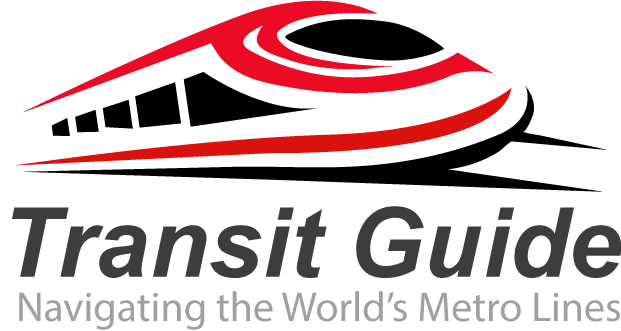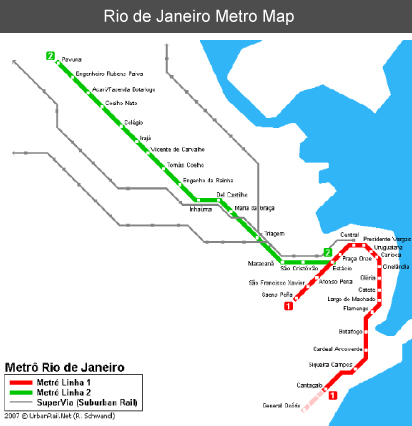The Rio de Janeiro Metro system, known locally as “Metrô Rio,” is the backbone of public transportation in Brazil’s iconic coastal city. Since opening in 1979, this efficient subway network has become essential for both locals and tourists exploring Rio’s stunning beaches, historic neighborhoods, and world-famous attractions.
Metro Lines and Coverage
Rio’s metro system consists of four main lines covering approximately 58 kilometers across the city. Line 1 (Orange) connects the South Zone’s upscale neighborhoods like Copacabana and Ipanema to downtown Rio, making it particularly valuable for tourists. Line 2 (Green) extends from the city center to the North Zone, including stops near Maracanã Stadium. Line 3 (Red) serves the western suburbs, while Line 4 (Yellow) provides crucial connections to Barra da Tijuca and the Olympic Park area.
The system strategically connects major tourist destinations, business districts, and residential areas, making it an ideal choice for visitors wanting to avoid Rio’s notorious traffic congestion. Key stations include Carioca (downtown), Copacabana, Ipanema/General Osório, and Antero de Quental.
Operating Hours and Frequency
The Rio Metro operates Monday through Saturday from 5:00 AM to midnight, with Sunday hours running from 7:00 AM to 11:00 PM. During peak hours (7:00-9:00 AM and 5:00-7:00 PM), trains arrive every 2-3 minutes, while off-peak intervals extend to 5-10 minutes. This reliable schedule makes the metro dependable for both daily commutes and tourist excursions.
Ticketing and Payment Options
Rio Metro offers various ticket options to accommodate different travel needs. Single-ride tickets are available, but the rechargeable RioCard provides better value for multiple trips. Tourists can purchase special day passes or multi-day cards for unlimited travel within specified periods. The system accepts both physical cards and digital payments through mobile apps, streamlining the boarding process.
Safety and Accessibility Features
Safety is a priority throughout the Rio Metro system. Stations feature security cameras, emergency communication systems, and regular police patrols. The network is also designed with accessibility in mind, offering elevators, tactile guidance systems for visually impaired passengers, and designated spaces for wheelchair users and people with reduced mobility.
Tourist-Friendly Amenities
The metro system caters exceptionally well to international visitors. Station signs display information in Portuguese and English, and many stations feature tourist information desks. Free Wi-Fi is available throughout the network, allowing travelers to stay connected while navigating the city.
Environmental Impact and Sustainability
Rio Metro represents an environmentally conscious transportation choice, significantly reducing carbon emissions compared to private vehicle travel. The system uses energy-efficient trains and implements various sustainability initiatives, making it an eco-friendly option for environmentally aware travelers.
Planning Your Journey
Before traveling, download the official MetrôRio app or consult online maps to plan your route efficiently. The system integrates well with other public transportation options, including buses and the VLT (light rail), creating a comprehensive network for exploring all of Rio de Janeiro’s incredible offerings.
The Rio Metro system transforms city navigation from stressful to seamless, allowing you to focus on experiencing the vibrant culture, stunning landscapes, and warm hospitality that make Rio truly marvelous.

